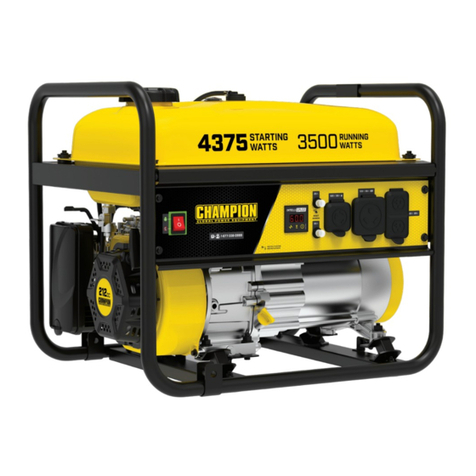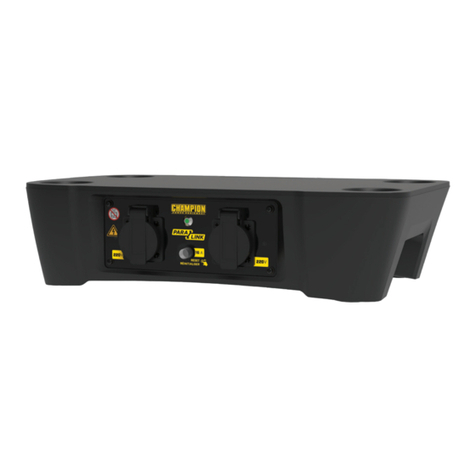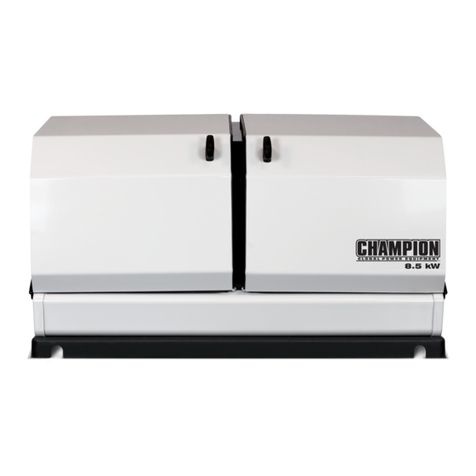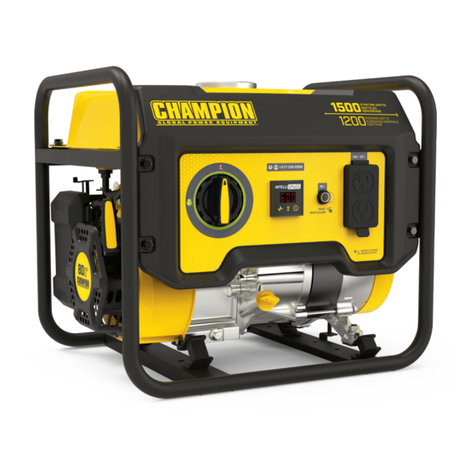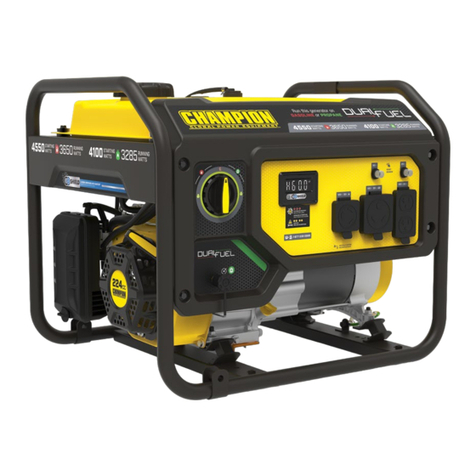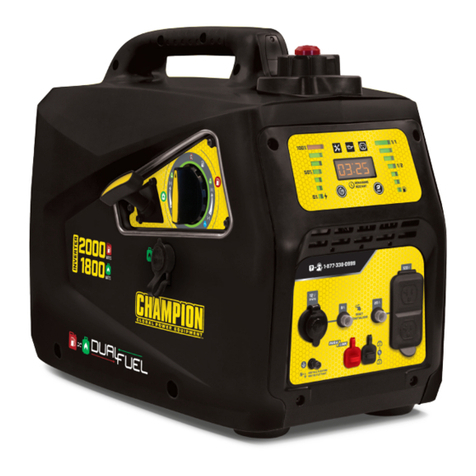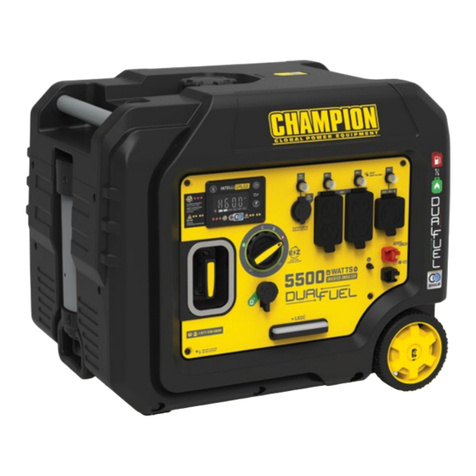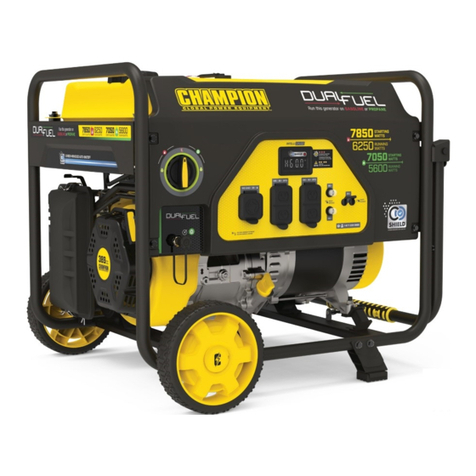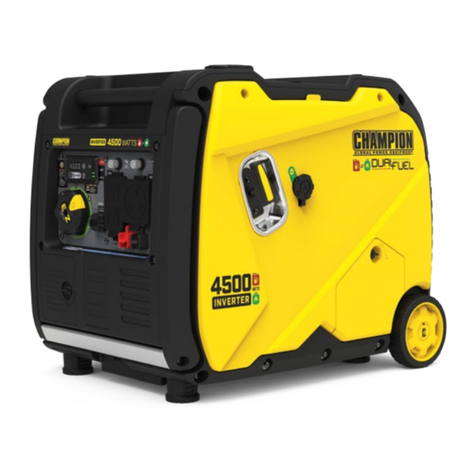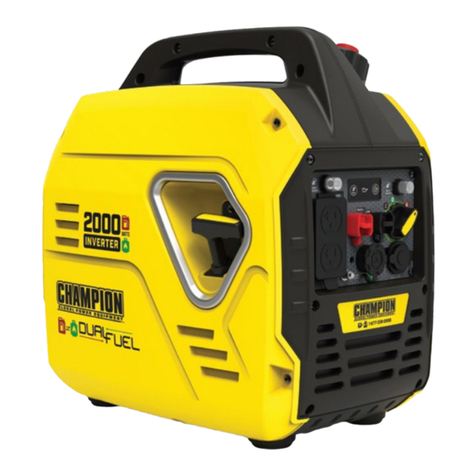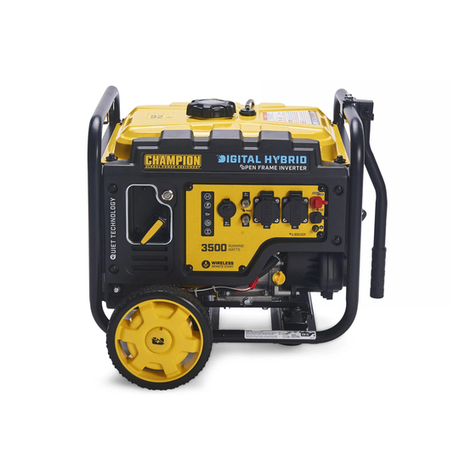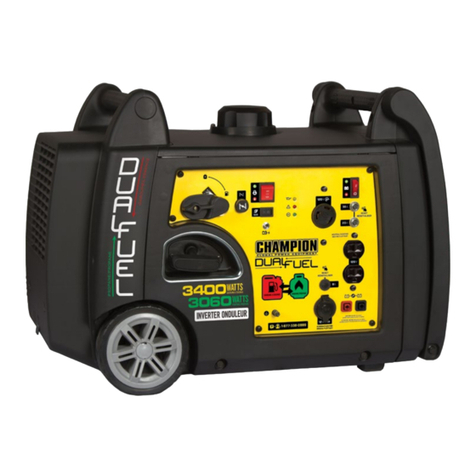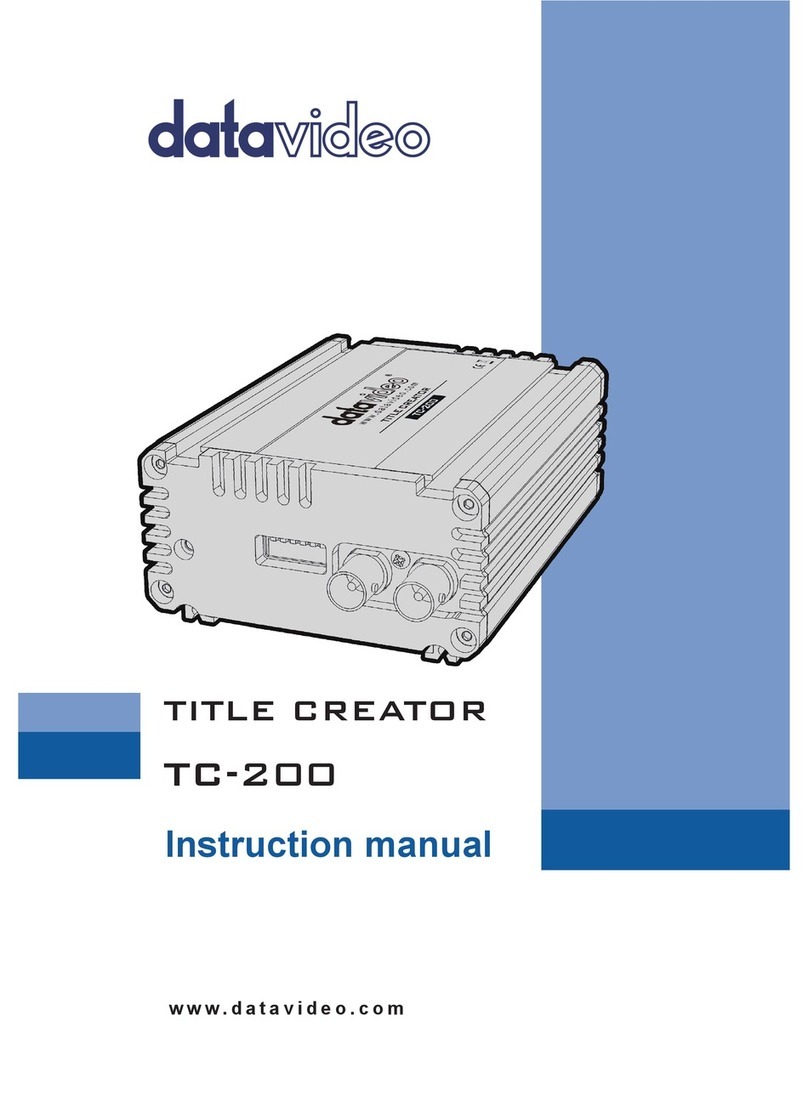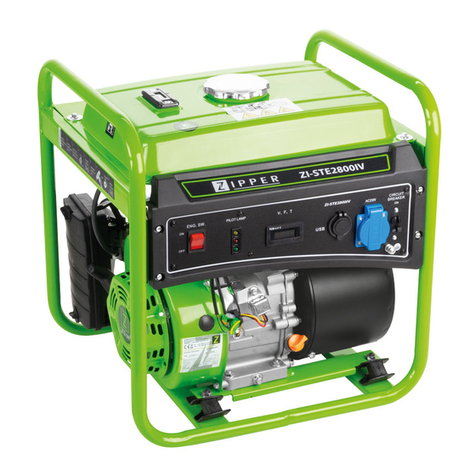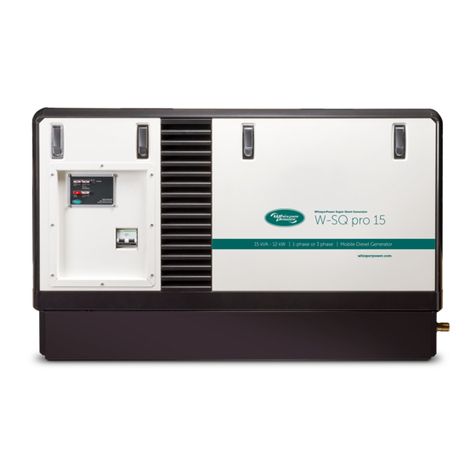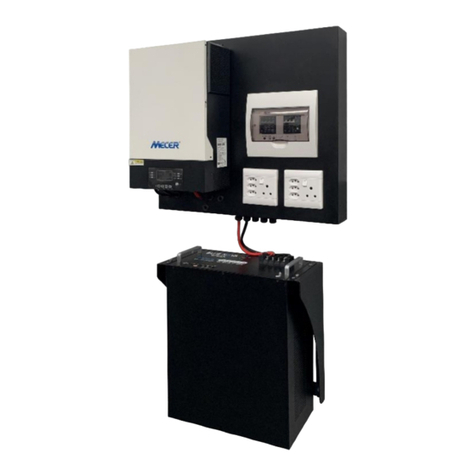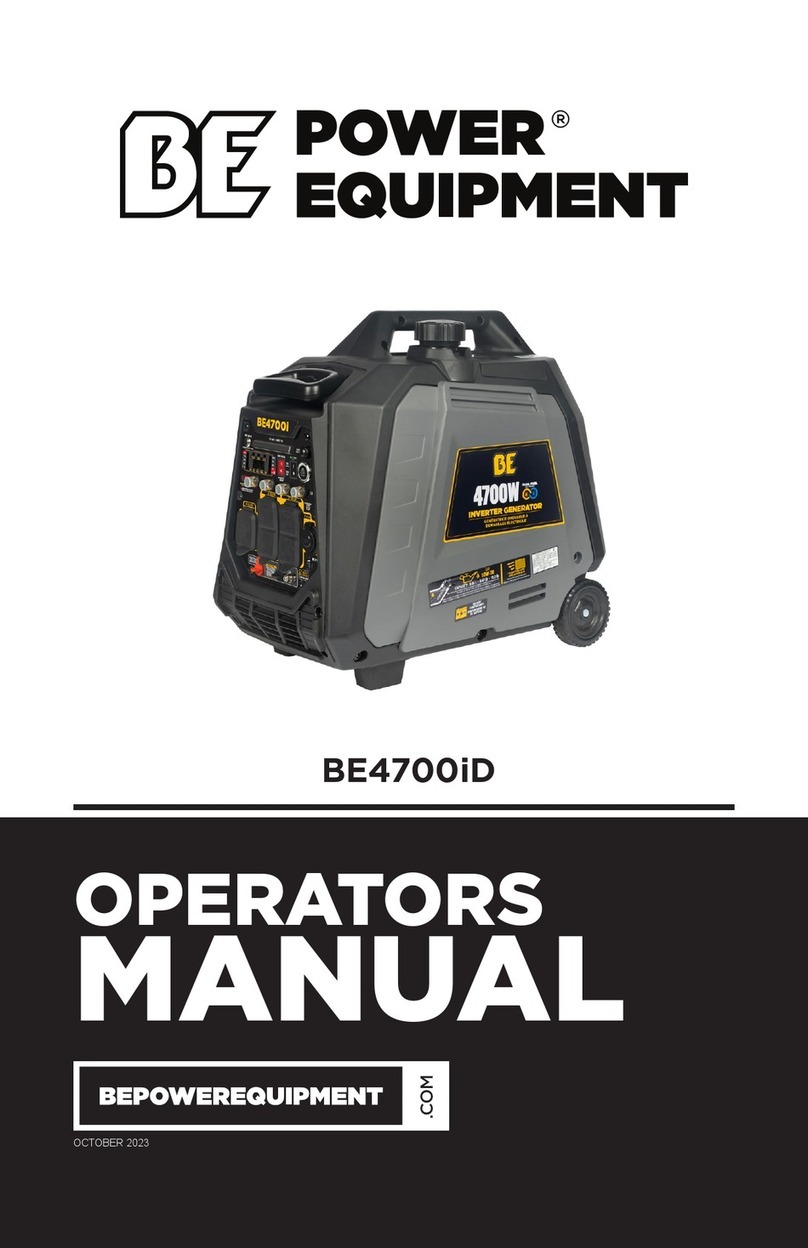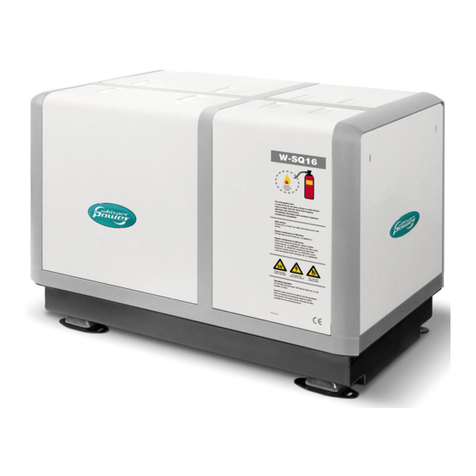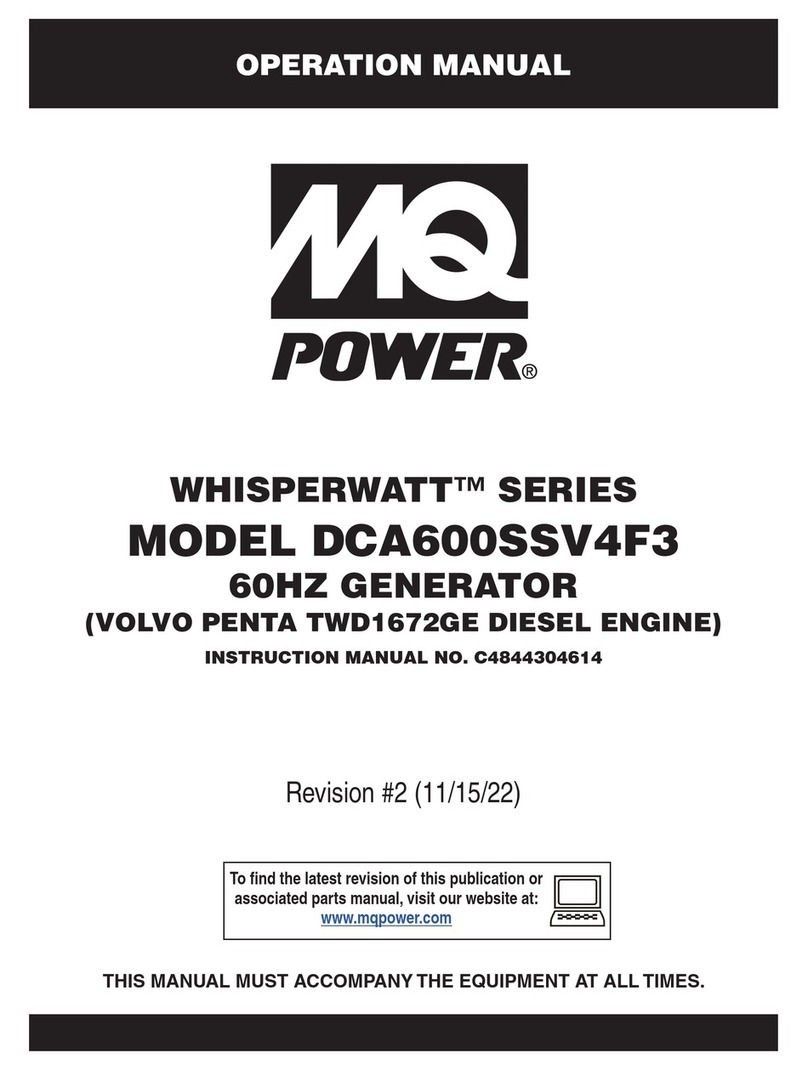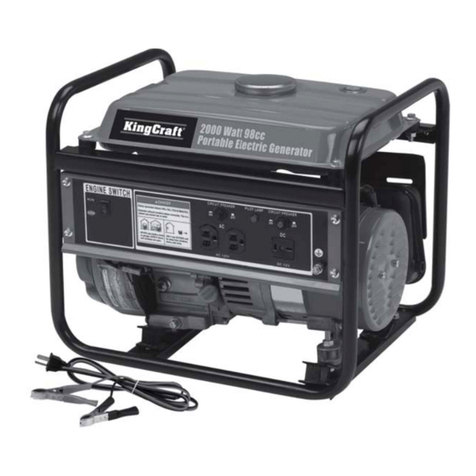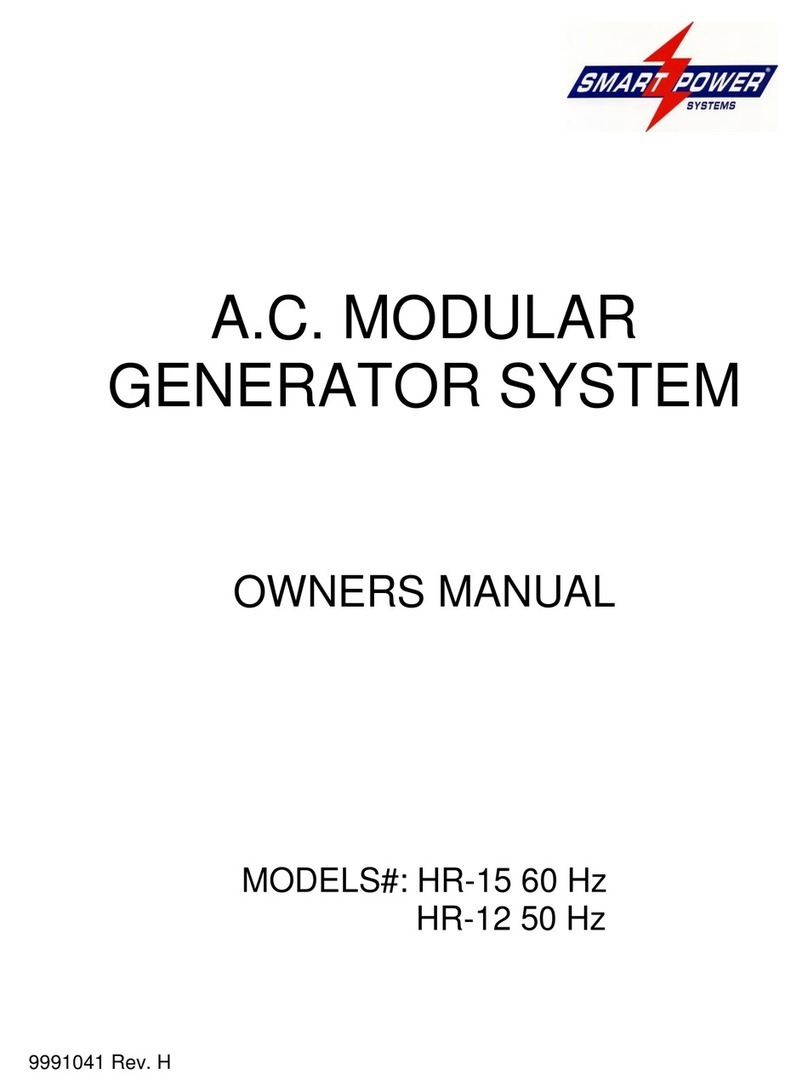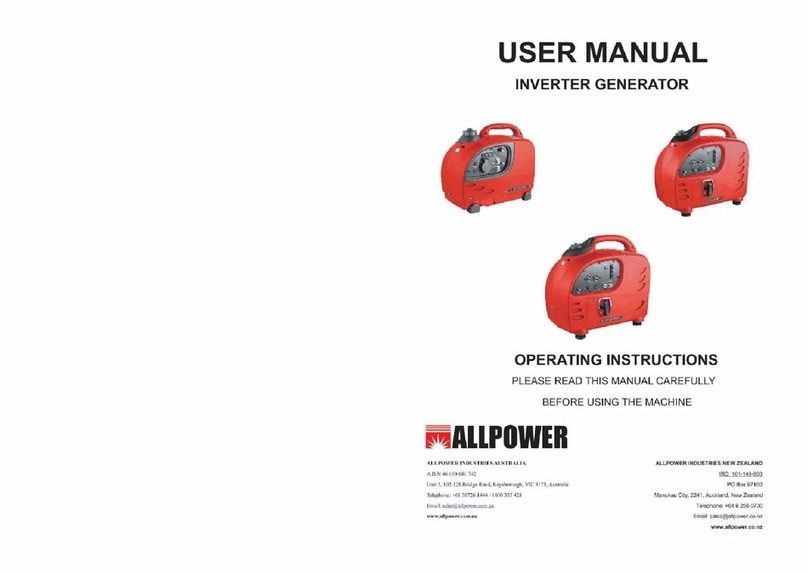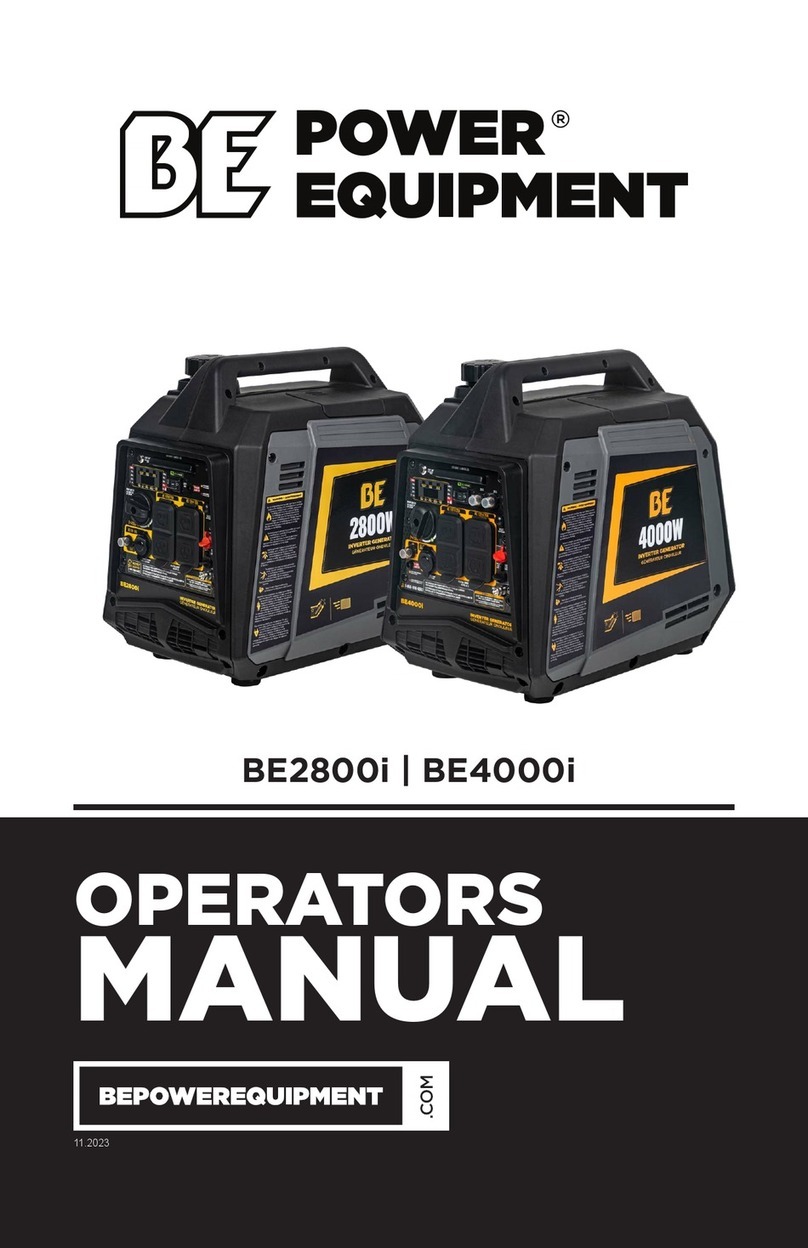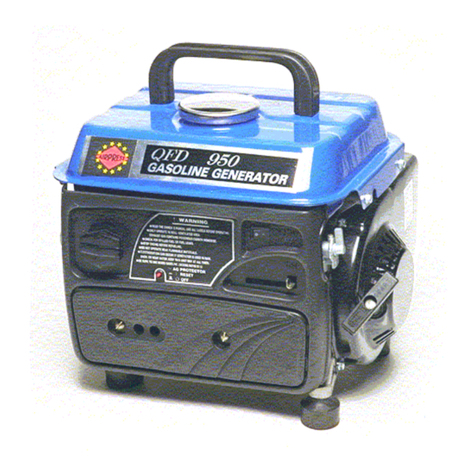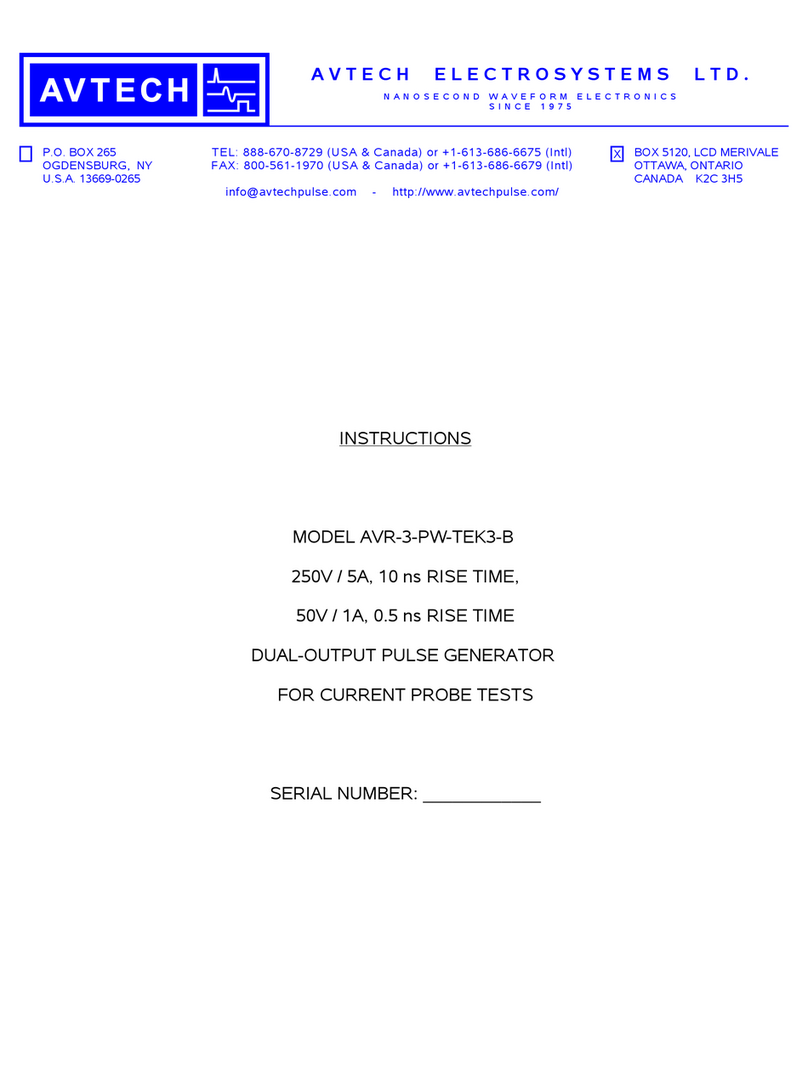
92001I - 2500W PORTABLE INVERTER GENERATOR 92001I - 2500W PORTABLE INVERTER GENERATOR
ASSEMBLY OPERATION
12 13
EN
NOTICE
Check oil level often during the break-in period. Refer to the
Maintenance section for recommended service intervals.
CAUTION
This engine is equipped with a low oil shut-off and will stop
when the oil level in the crankcase falls below the threshold
level.
NOTICE
The first 5 hours of run time are the break-in period for the
unit. During the break in period stay at or below 50% of the
running watt rating and vary the load occasionally to allow
stator windings to heat and cool. Adjusting the load will also
cause engine speed to vary slightly and help seat piston
rings. After the 5 hour break-in period, change the oil.
NOTICE
Synthetic oil may be used after the 5 hour initial break-in
period. Using synthetic oil does not increase the
recommended oil change interval. Full synthetic 5W-
30 oil will aid in starting in cold ambient < 41º F (5º C)
temperatures.
Add Fuel
Use clean, fresh, regular unleaded gasoline with a minimum
octane rating of 85 and an ethanol content of 10% or less by
volume. ybc
DO NOT mix oil with gasoline.
1. Remove the gasoline cap.
2. Slowly add gasoline to the tank. DO NOT OVERFILL.
Gasoline can expand after filling. A minimum of ¼
in. (6.4 mm) of space left in the tank is required for
gasoline expansion, although more than ¼ in. (6.4 mm) is
recommended. Gasoline can be forced out of the tank as a
result of expansion if overfilled, and can affect the stable
running condition of the generator.
3. Screw on the gasoline cap until you hear a “clicking” noise.
Wipe up any spilled fuel.
CAUTION
Use unleaded gasoline with a minimum octane rating of 85
and an ethanol content of 10% or less by volume.
DO NOT light cigarettes or smoke when filling the tank.
DO NOT mix oil and gasoline.
DO NOT overfill the tank. Fill tank to approximately ¼ in.
(6.4 mm) below the top of the tank to allow for gasoline
expansion.
DO NOT pump gasoline directly into the generator at the
pump. Use an approved container to transfer the gasoline to
the generator.
DO NOT fill tank indoors.
DO NOT fill tank when the engine is running or hot.
WARNING
Pouring gasoline too fast through the fuel screen may result
in gasoline splashing over the generator and operator while
filling.
NOTICE
The generator engine works well with 10% or less ethanol
blend gasoline. When using ethanol-gasoline blends there
are some issues worth noting:
–Ethanol-gasoline blends can absorb more water than
gasoline alone.
–These blends can eventually separate, leaving water or
a watery goo in the tank, fuel valve and carburetor. The
compromised gasoline can be drawn into the carburetor
and cause damage to the engine and/or potential
hazards.
–If a fuel stabilizer is used, confirm that it is formulated to
work with ethanol-gasoline blends.
–Any damages or hazards caused by using improper
gasoline, improperly stored gasoline, and/or
improperly formulated stabilizers, are not covered by
manufacturer’s warranty.
It is advisable to always shut off the gasoline supply and
run the engine to starvation after each use. See Storage
instructions for extended non-use.
Grounding
Your generator must be properly connected to an appropriate
ground to help prevent electric shock.
WARNING
Failure to properly ground the generator can result in
electric shock.
A ground terminal connected to the frame of the generator has
been provided (see Controls and Features for terminal location).
For remote grounding, connect of a length of heavy gauge
(12 AWG minimum) copper wire between the generator ground
terminal and a copper rod driven into the ground. We strongly
recommend that you consult with a qualified electrician to
ensure compliance with local electrical codes.
Neutral Floating*
–Neutral circuit IS NOT electrically connected to the frame/
ground of the generator.
–The generator (stator winding) is isolated from the frame
and from the AC receptacle ground pin.
–Electrical devices that require a grounded receptacle pin
connection will not function if the receptacle ground pin is
not functional.
Neutral Bonded to Frame*
–Neutral circuit IS electrically connected to the frame/ground
of the generator.
–The generator system ground connects lower frame
cross-member below the alternator. The system ground is
connected to the AC neutral wire.
* See your Specifications section for specified type of grounding.
OPERATION
Generator Location
NEVER operate the generator inside any building, including
garages, basements, crawlspaces and sheds, enclosure or
compartment, including the generator compartment of a
recreational vehicle. Please consult your local authority. In
some areas, generators must be registered with the local
utility. Generators used at construction sites may be subject
to additional rules and regulations. Generators should be on
a flat, level surface at all times. (Even while not in operation)
Generators must have at least 5 ft. (1.5 m) of clearance from
all combustible material. In addition to clearance from all
combustible material, generators must also have at least 3 ft.
(91.4 cm) of clearance on all sides to allow for adequate cooling,
maintenance and servicing. Generators should never be started
or operated in the back of a SUV, camper, trailer, in the bed of
a truck (regular, flat or otherwise), under staircases/stairwells,
next to walls or buildings, or in any other location that will not
allow for adequate cooling of the generator and/or the muffler.
DO NOT contain generators during operation. Allow generators
to properly cool before transport or storage.
Place the generator in a well-ventilated area. DO NOT place the
generator near vents or intakes where exhaust fumes could
be drawn into occupied or confined spaces. Carefully consider
wind and air currents when positioning generator.
Failure to follow proper safety precautions may void
manufacturer’s warranty.
WARNING
Do not operate or store the generator in rain, snow, or wet
weather.
Using a generator or electrical appliance in wet conditions,
such as rain or snow, or near a pool or sprinkler system,
or when your hands are wet, could result in electrocution.
WARNING
During operation the muffler and exhaust fumes will
become hot. If adequate cooling and breathing space are
not supplied, or if the generator is blocked or enclosed,
temperatures can become extremely heated and may lead
to fire.
Surge Protection
Electronic devices, including computers and many
programmable appliances use components that are designed
to operate within a narrow voltage range and may be affected
by momentary voltage fluctuations. While there is no way to
prevent voltage fluctuations, you can take steps to protect
sensitive electronic equipment.
–Install UL1449, CSA-listed, plug-in surge suppressors on the
outlets feeding your sensitive equipment.
Surge suppressors come in single- or multi-outlet styles.
They’re designed to protect against virtually all short-
duration voltage fluctuations.




















